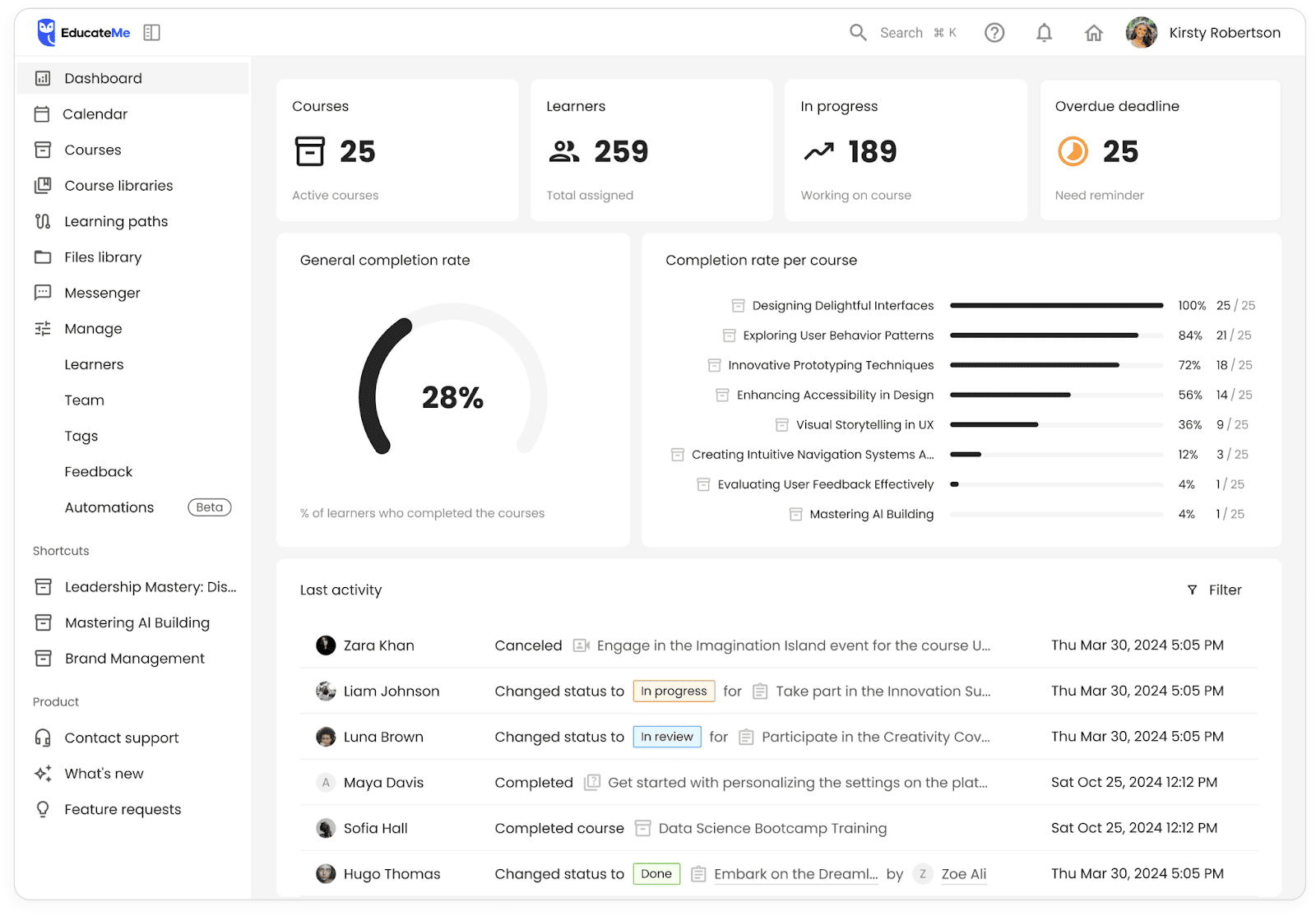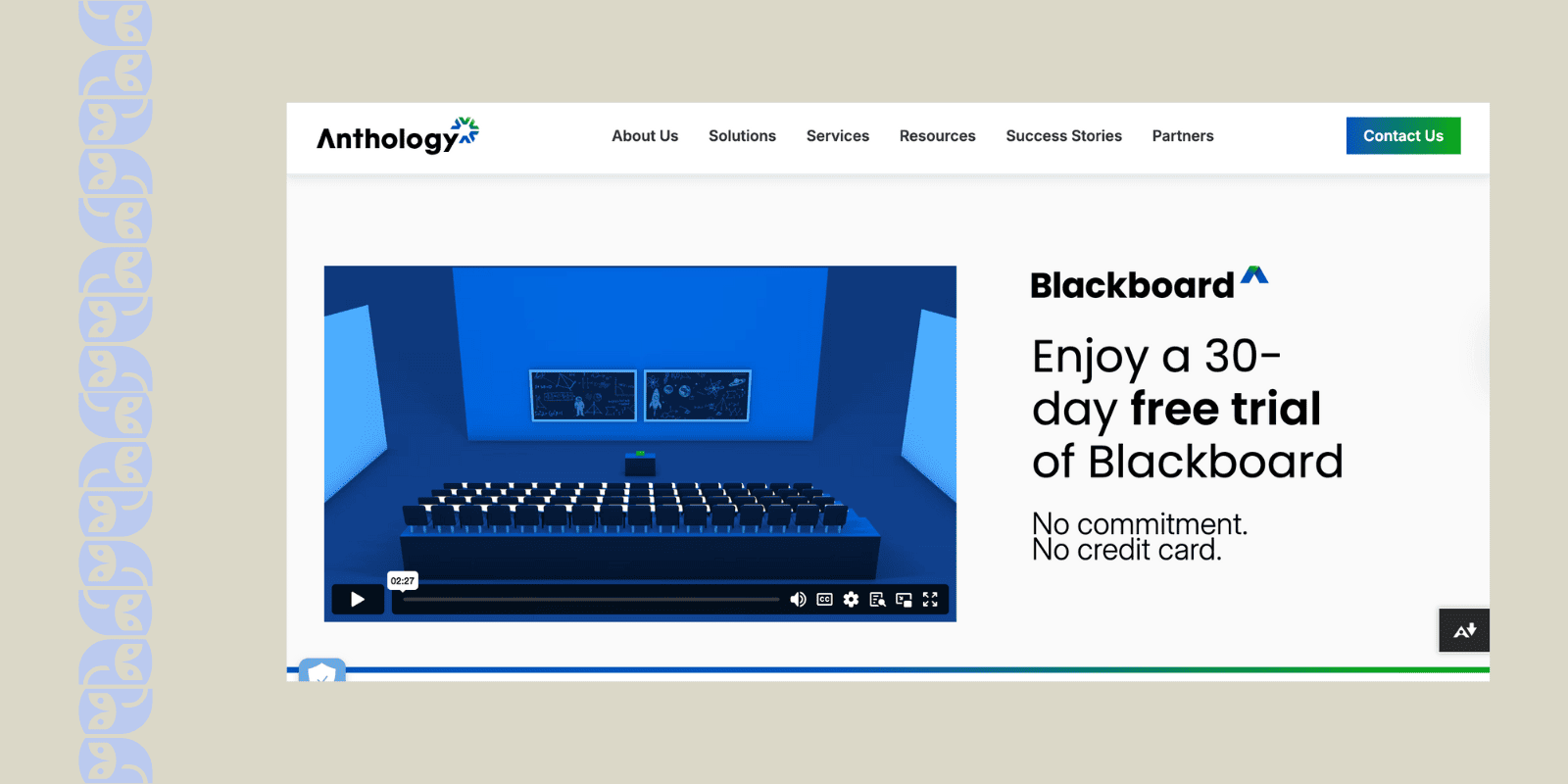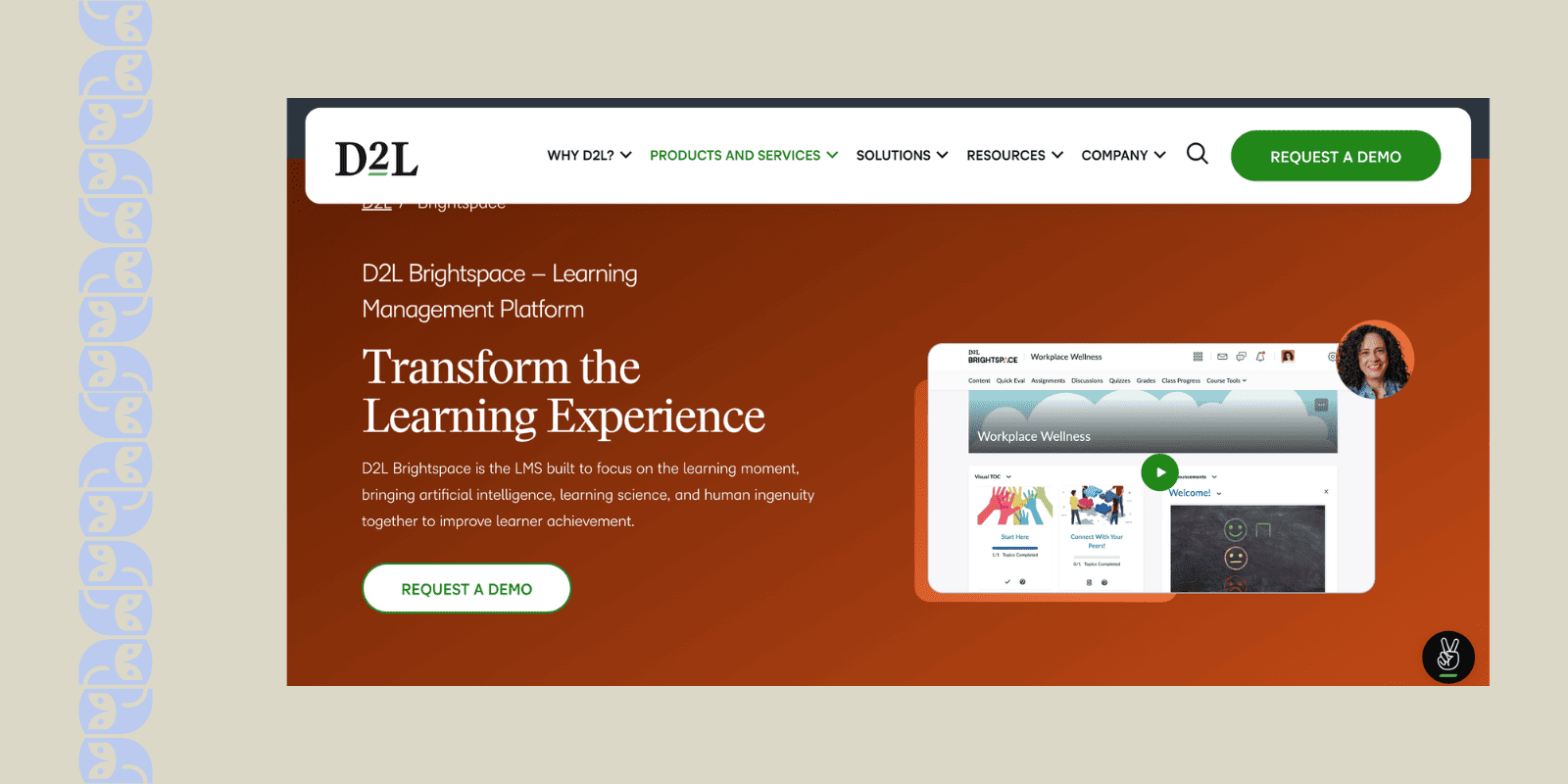ore and more colleges and universities are implementing online learning technologies. Using LMS for higher education is still a trend, even though the ultimate reason for its implementation, the pandemic, has a much lower impact on education.
This adoption reflects an effort to stay abreast of global advancements, embrace innovative strategies, and enhance overall effectiveness. Yet, the requirements for the software are high, especially in terms of functionality and security.
This article will explore why institutions seek LMS systems and provide a list of the best LMSs in higher education.
LMS in Higher Education: Benefits and Opportunities

Undoubtedly, adopting LMS in higher education brings certain benefits, in particular to business universities, career colleges, or any organization operating globally. For these institutions, it enhances access to and delivery of educational content.
And, if larger higher education actors opt for such comprehensive platforms as Canvas or BlackBoard, some smaller institutions may not even see the necessity for an LMS. Much depends on the learning and teaching needs, LMS pricing, and the number of teaching staff.
But why you should consider such LMS systems in the first place?
To remain competitive
With a higher ed LMS, you have chances to keep your institution competitive. How? By leveraging the software’s flexibility and accessibility.
Subject to Voice of the Online Learner, 77% of learners said they decided on the online modality before any other factor.
For you, it is a way to answer the diverse technological and learning needs of students and apply modern learning experiences. Call it a commitment to lifelong learning, flexibility, and innovation!
To integrate powerful practices into the learning
Besides, LMS systems facilitate making online learning experiences more immersive and personalized. For instance, with features like discussion forums, group projects, and real-time collaboration tools, students can engage more actively. As a result, they foster a dynamic learning community conducive to academic success.
Moreover, a higher education LMS appears as the solution for cases when traditional learning strategies simply do not work. For a university with a diverse student population spread across different geographical locations or extremely varied schedules, such a platform can be a game changer.
To optimize work processes
Another reason for adopting higher ed LMS lies in better management and course creation capabilities. Learning management should streamline administrative tasks, such as course management, event scheduling, grading, and resource distribution.
Automation and centralized data management enhance efficiency, freeing up faculty to focus on teaching and student support. In case you have more than 150 students or 7 cohorts to manage, the number of manual tasks becomes unbearable. Therefore, LMS adds to the overall productivity and satisfaction significantly.
Read more: Cohort-Based Management Best Practices
To lower maintenance costs
Finally, investing in a quality higher education LMS not only enhances educational outcomes but also results in significant long-term cost savings. By centralizing educational resources, reducing the need for physical materials, and streamlining processes, you can lower overhead costs.
Additionally, cloud-based LMS solutions often offer scalable pricing models, eliminating the need for expensive infrastructure investments and reducing IT maintenance expenses.
Best LMS for Higher Education
As you already know, the reasoning for implementation of an LMS in a higher education setting can be different. Some have strict policies regarding content production, for others, there is no need for advanced management.
Yet, what can affect the solution of higher education organizations? Interoperability, accessibility, security, communication features, management options, and learning tools.
With this in mind, we have formed a list of the best LMS for higher education:
#1. EducateMe: Best Higher Ed LMS in Terms of Management and Accessibility

EducateMe is one of the best LMSs for higher education, being extremely intuitive, having powerful learning and course creation tools, and solid management and analytics.
Why is it good for universities and colleges? It puts cohort and collaborative learning at the center of operation. That’s why it has specific tools to streamline group management, automate schedules, and apply different learning strategies in the classroom.
Its course editor benefits from the flexible architecture and allows adding multiple formats. The integration capability is pretty advanced, including Zoom, Google Apps, Loom, and Notion integrations.
Lastly, the group assessment and peer review options are great for synchronous, asynchronous, or blended learning. Yet, the possible downturn is the lack of SCORM that can be compensated by solid support, bringing custom solutions.
Other benefits of this higher education LMS:
- Intuitive course builder. Use blocks to create webinars, and lessons, and support them with advanced assignments and quizzes. Apply multiple formats, embed links, issue certificates, and link third-party apps.
- Engagement tools. There is a decent variety of tools, including a comment section, built-in messenger, peer review, and notification features.
- Analytics. EducateMe offers pretty deep and automated learner analytics, from feedback analysis and progress tracker to attendance data and dropout red flags.
- Branding and customization options. Branding matters, and with EducateMe, you can change logos, fonts, and elements to make students feel more immersed in the learning.
Best for: small and middle higher education organizations, corporate universities, post-graduate colleges, and academies, schools, creative and non-tech learning providers, and corporate actors.
#2. Blackboard Learn: Popular Higher Ed Solution

Blackboard Learn is a popular option for many higher education institutions, providing a comprehensive system and diverse assessment features.
Its accessibility options are on-point as well, bringing good features for online classroom management and program scaling. The advanced assessment and quizzes refer to various question types that can be added, including calculated, true/false, essay, and multiple choice questions.
Also, interactive tools are pretty decent, offering discussion boards, personal journals or blogs, and wikis (collaborative spaces). Thus, it provides great room for cooperation and collaboration.
The major downturns are the outdated and heavy design and limitations in upload opportunities. In addition, it is not as flexible in terms of course creation as other software.
Other crucial features of this higher ed LMS:
- Activity stream. With this feature, students and instructors can keep track of the activities, jump to certain events, and meet deadlines.
- Mobile app. Blackboard provides an app for students and teachers to view content, participate in activities, and connect.
- Grading system. This higher education LMS offers an intuitive and flexible rubric system.
Pricing: 30-day free trial, pricing is available upon request.
Best for: large higher education institutions that need assessment and quiz variety
Further reading: Best Peer-to-Peer Platforms
#3. Brightspace by 2DL: Promising Higher Ed LMS

Brightspace (D2L) has been on the rise in recent years as a go-to LMS for higher education, offering tailored learning paths and great reporting. The main advantage here is that it is straightforward and flexible.
At the same time, its content editor is great and intuitive, supporting the SCORM format and offering crucial integrations. Besides, there is a feature to generate videos thanks to the available recorder. This makes it a good option for blended learning and online programs.
The student analytics and reporting are on point, allowing you better decision-making. Yet, this higher ed LMS lacks robust engagement and management tools for advanced courses and programs.
Interesting features of this higher education LMS
- Gamification features. You can develop awards, create leaderboards, and issue certificates to the students.
- Customizable dashboard. You can customize the navigation bars and add links to make the dashboard more convenient for operation.
Pricing: free plan; more advanced plans can be negotiated after the contact with sales.
Best for: small and middle-size higher education institutions and business universities.
#4. Canvas LMS: Most Used LMS in Higher Education
Canvas LMS stands out as one of the most used LMS solutions among higher education institutions. Why? Well, this open-source learning management system is pretty comprehensive, bringing rich features and an advanced course structure.
Subject to Edutechnica, Canvas Infrastructure takes 40% of the market based on the number of student enrollments.
The mix of open-source nature and great architecture allows higher institutions to answer diverse learning needs, tailor specific programs, and keep things organized. Much of the functionality comes from a variety of content options and advanced integrations, including academic ones.
Major downturns: Canvas LMS is pretty hard to use for those who are not code-savvy; it offers no community feature and lacks powerful management and automation.
Other crucial features of this LMS for higher education
- Engagement tools. It offers great spaces for collaboration, including announcement and comment sections. Also, BigBlueButton, a pre-built tool for conferences and live sessions, and Podcast Feed can be helpful for real-time interactions.
- Student analytics. The exciting features here are student “Roll Call” to track attendance and set a seating chart and course completion analytics to monitor performance.
- Commons feature. This tool offers a pool of users’ program templates, which is very useful considering the complexity of the software.
- Mobile app. Canvas allows the creation of an app for a smoother learning experience.
Pricing: free for teachers and individual actors; however, it takes a quote-based pricing approach regarding organizations.
Best for: medium and large organizations with an academic structure and need for diverse tools
Read more: Top Canvas Alternatives and Google Classroom vs Canvas LMS: Detailed Analysis
#5. Moodle LMS for Higher Education with Decent Course Editing Options

Just like the higher education LMS above, Moodle is a robust open-source LMS offering diverse features for educators to create and manage learning experiences. How is it different? There is a significant focus on activities and formats variety for program creation.
The learning management system provides more than 20 activity formats to build a program. You can start a program with a chat, then add a database, and back it with the assignment, or attach a part of the book to be read. Also, the assignment editor is solid enough, having a decent pool of question types.
That way, there are diverse ways to create a learning experience and reuse content.
Major downturns: Similar to Canvas, it is heavy and can be complicated to use, while advanced settings can make it inflexible and hard to manage.
Other important features of this higher ed LMS
- Editing capabilities: Considering the number of content and assignment options, Moodle includes decent in-bulk options for editing. It adds to program scaling and development.
- Home dashboard: Moodle allows you to customize your home dashboard and key spaces that help manage your courses and lessons. It allows for creating shortcuts and saving time on administration.
- Variety of plugins. Moodle brings a significant number y of integrations and pre-built plugins that add to course creation.
Pricing: Moodle is free, while MoodleCloud solution is not; MoodleCloud pricing starts at $120/year (for 50 users and 250 MB storage); the highest Standard Plan costs $1,670/year (for 1,000 users and 5 GB storage). The Premium plan pricing is available via request.
Best for: medium and large organizations that have diverse courses and programs
Further reading: Top Moodle Alternatives or Google Classroom vs Moodle: Detailed Analysis
#6. Open edX: Higher Ed LMS for Advanced Programs

Open edX is another open-source LMS for higher education, emphasizing advanced program customization. It is possible due to the powerful content editor, block system, and the ability to use code.
Importantly, its users can use custom code blocks for program development, and that way create unique learning paths and experiences. Also, it offers outstanding integration and content embodiment capabilities, including options for gamification.
Major disadvantages: due to its open-source nature, it is very difficult to use and implement; learning steep is pretty step.
Additional features of this Higher Education LMS:
- Content editor. This solution provides a decent amount of content formats (20+) to be used. They include such recognized types as SCORM and LTI formats.
- Multilevel structure. It allows users to back course management and scaling efforts, make reporting and collaboration easier, and support diverse activities.
- Wide Support. OpenedX has a solid community, with forums and chats for seeking solutions. Besides, there is an opportunity to resort to service partners for help (usually a paid option).
Best for: higher education organizations looking for custom learning solutions and learning experiences.
Pricing: Open edX is free; the partners providing support can ask for a fee for their services.
Summary: Best Learning Management System in Higher Education
In the end, the adoption of LMS systems offers numerous benefits and opportunities, particularly for business universities, career colleges, and globally operating organizations.
Yet, with so many options available, what is the right option for your organization? Again, it will depend on your learning needs, budget, and number of courses.
EducateMe is the best higher ed in terms of accessibility and management without sacrificing engagement and content diversity. It offers no SCORM, but the tool may compensate for it with support and integrations.
Try EducateMe or book a demo to see how balanced it is!
Other LMS systems that can impress with their intuitive approach are Blackboard Learn and BrightSpace by 2DL. Yet, each of them lacks effective management and engagement tools.
For large actors, comprehensive LMS solutions like Canvas and Moodle will address diverse needs effectively. Nonetheless, Canvas and Moodle LMS systems are pretty heavy and difficult to operate.
Lastly, if you are looking for an advanced and custom learning experience, Open edX can be your choice, but, due to its open-code nature, you may need a special team or agency to build a system for you there.






















